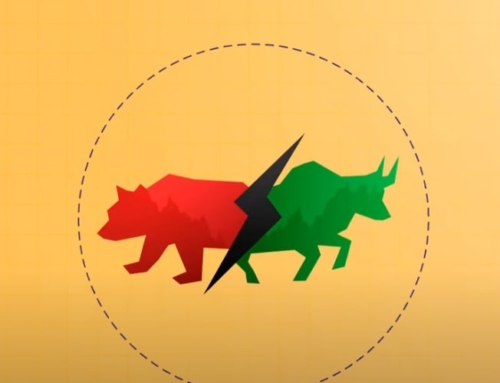What is a green shoe option
Introduction
Investors often look at the Red Herring Prospectus to get more detailed information about a company’s Initial Public Offer (IPO).
The offer document or the Red Herring Prospectus contains information such as the company’s goals and objectives, the background of promoters, the purpose of the issue, etc.
One important disclosure in the prospectus is regarding the Green Shoe Option. But what does it mean and how does it impact an IPO?
What is a green shoe option?
It is an option that allows the underwriters of an IPO to issue around 15% more shares than the original issue amount.
For example, a company coming up with an IPO plans to issue 1 crore shares. However, they have a provision for Green shoe option in their Red herring Prospectus. This will allow the underwriter to issue additional 15 lakh shares i.e., 15% of the original shares if there is a strong demand for shares and they are trading above the offer price.
Green shoe option are also known as the over-allotment option.
This option is used as a measure to stabilize the price of shares after the listing of an IPO. The main objective behind using the green shoe option is to ensure a successful opening price for the IPO.
Origin of green shoe option
The green shoe option first came into existence in 1919, when a company called Green Shoe Manufacturing issued this option for the first time.
Today, this company is known as Stride Rite Corporation.
Green shoe option in India
The green shoe option was introduced by the Securities Exchange Board of India (SEBI) in 2003 to stabilize the price of IPOs.
Realty companies in India such as Lodha Developers, Sahara Prime City, and Ambience opted for green shoe option during times when share prices going below their offer price was a common phenomenon.
How the green shoe option works
The green shoe option allows the underwriters to issue a maximum of 15% more shares than the original amount of shares.
This option can only be exercised up to 30 days after the listing of the IPO.
Green shoe option is used by the underwriters in two different ways:
If the share price rises to an unexpected level after the listing of IPO, the underwriters will exercise the green shoe option and buy up to 15% of the shares from the promoters at the issue price and sell them to their clients at a profit.
This will ensure that the extra demand for the shares is met and the price is stabilized.
If the IPO fails to live up to the expectations and the price starts falling below the offer price, the underwriters start buying back shares from the open market instead from the company.
This creates a demand for the shares in the market thus preventing them from falling below the offer price.
In the entire process, any loss or gain incurred from exercising the green shoe option will be borne by the underwriters and the company issuing the IPO will not be liable for anything.
Conclusion
From an investor’s point of view, green shoe options are great as they act as a price stabilizing mechanism that prevents the shares from not falling below the offer price.
This is very helpful to those investors who invest in IPOs. They can avoid losses as the prices will not go below the offer price.
However, the ability of an underwriter to stabilize the prices is limited. Therefore, investors are advised to not get caught up in the hype around the IPO and to read the Red Herring Prospectus thoroughly before investing.
Howdy!
If you’re here for the first time, let’s get introduced.
VRD Nation is India’s premier stock market training institute and we (Team VRD Nation) are passionate about teaching each and every aspect of investing and trading.
If you’re here for the first time, don’t forget to check out “Free Training” section where we have tons of free videos and articles to kick start your stock market journey.
Also, we got two awesome YouTube channels where you can continue the learning process.
Must-Read Articles
What is a green shoe option
Introduction
Investors often look at the Red Herring Prospectus to get more detailed information about a company’s Initial Public Offer (IPO).
The offer document or the Red Herring Prospectus contains information such as the company’s goals and objectives, the background of promoters, the purpose of the issue, etc.
One important disclosure in the prospectus is regarding the Green Shoe Option. But what does it mean and how does it impact an IPO?
What is a green shoe option?
It is an option that allows the underwriters of an IPO to issue around 15% more shares than the original issue amount.
For example, a company coming up with an IPO plans to issue 1 crore shares. However, they have a provision for Green shoe option in their Red herring Prospectus. This will allow the underwriter to issue additional 15 lakh shares i.e., 15% of the original shares if there is a strong demand for shares and they are trading above the offer price.
Green shoe option are also known as the over-allotment option.
This option is used as a measure to stabilize the price of shares after the listing of an IPO. The main objective behind using the green shoe option is to ensure a successful opening price for the IPO.
Origin of green shoe option
The green shoe option first came into existence in 1919, when a company called Green Shoe Manufacturing issued this option for the first time.
Today, this company is known as Stride Rite Corporation.
Green shoe option in India
The green shoe option was introduced by the Securities Exchange Board of India (SEBI) in 2003 to stabilize the price of IPOs.
Realty companies in India such as Lodha Developers, Sahara Prime City, and Ambience opted for green shoe option during times when share prices going below their offer price was a common phenomenon.
How the green shoe option works
The green shoe option allows the underwriters to issue a maximum of 15% more shares than the original amount of shares.
This option can only be exercised up to 30 days after the listing of the IPO.
Green shoe option is used by the underwriters in two different ways:
If the share price rises to an unexpected level after the listing of IPO, the underwriters will exercise the green shoe option and buy up to 15% of the shares from the promoters at the issue price and sell them to their clients at a profit.
This will ensure that the extra demand for the shares is met and the price is stabilized.
If the IPO fails to live up to the expectations and the price starts falling below the offer price, the underwriters start buying back shares from the open market instead from the company.
This creates a demand for the shares in the market thus preventing them from falling below the offer price.
In the entire process, any loss or gain incurred from exercising the green shoe option will be borne by the underwriters and the company issuing the IPO will not be liable for anything.
Conclusion
From an investor’s point of view, green shoe options are great as they act as a price stabilizing mechanism that prevents the shares from not falling below the offer price.
This is very helpful to those investors who invest in IPOs. They can avoid losses as the prices will not go below the offer price.
However, the ability of an underwriter to stabilize the prices is limited. Therefore, investors are advised to not get caught up in the hype around the IPO and to read the Red Herring Prospectus thoroughly before investing.



















Leave A Comment